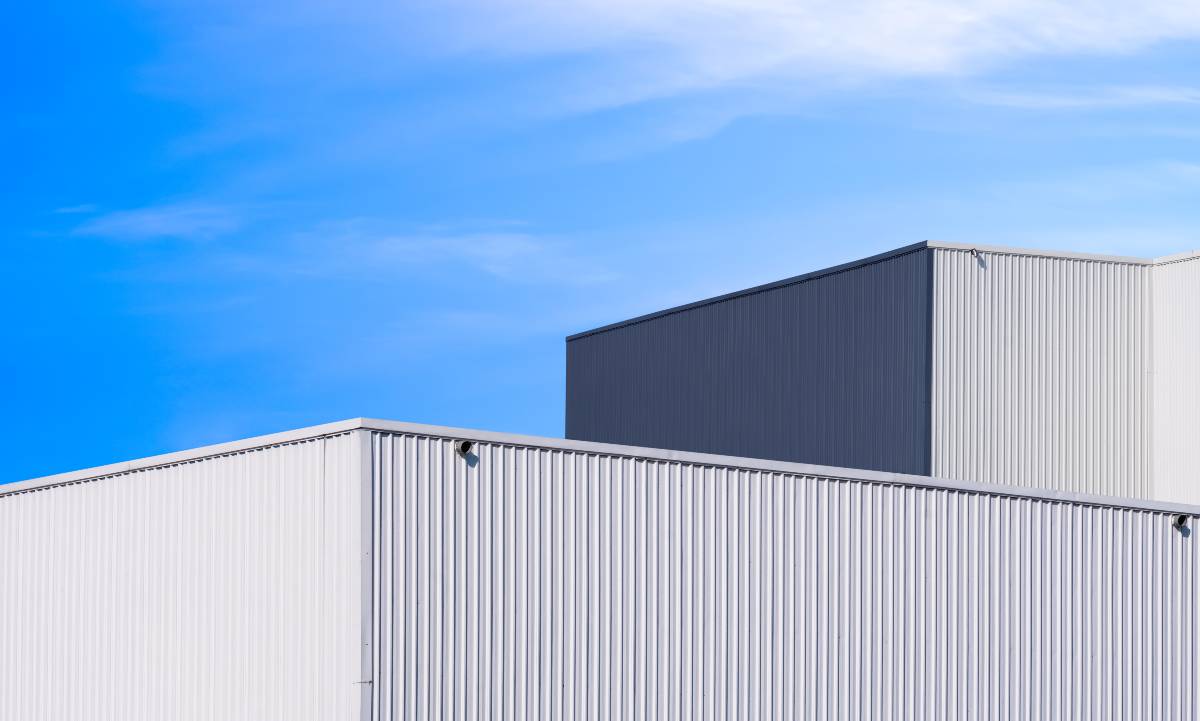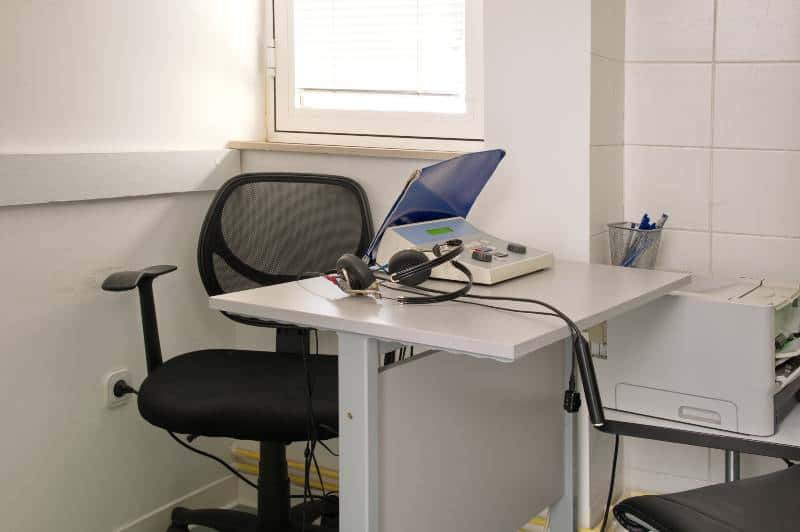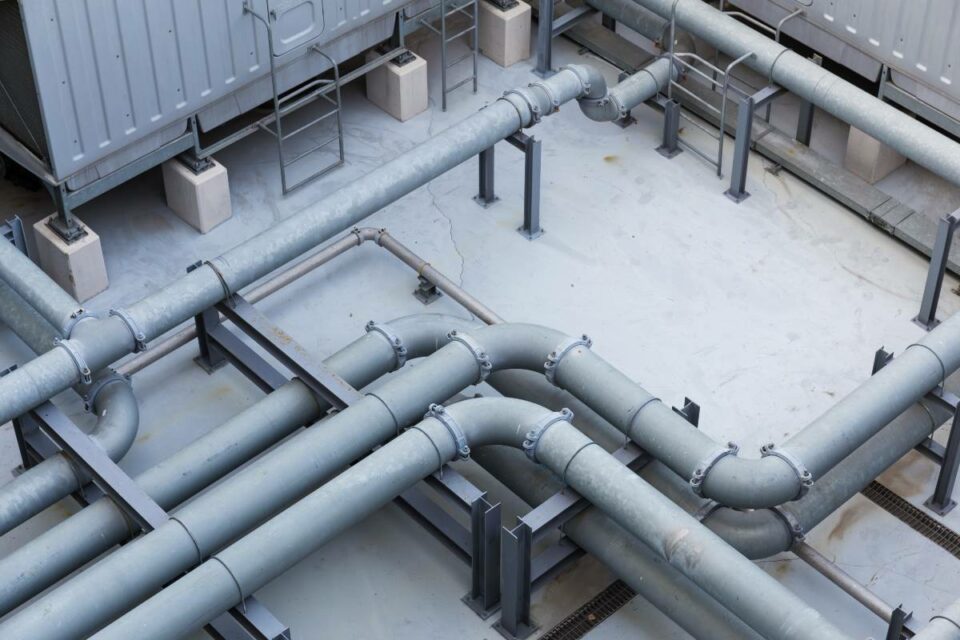In today’s rapidly evolving market, industrial real estate has emerged as a compelling investment opportunity. As an experienced professional in the commercial real estate industry, I’ve witnessed firsthand the growing importance of this sector. With over 18 years of experience representing business owners and landlords, I’m excited to share my insights on how you can unlock the potential of industrial real estate investing.
Key Takeaways
- Industrial investment opportunities in 2026 and beyond.
- Understanding market dynamics and property-specific factors is crucial for successful investing.
- Technological advancements and sustainable practices are reshaping the industrial real estate landscape.
Understanding the Fundamentals of Industrial Real Estate
Before we delve into the intricacies of investing, let’s define what industrial real estate entails. Industrial properties can be categorized into three main sub-categories:
- Warehouses and distribution centers: These facilities are designed to store and distribute goods efficiently, often featuring high ceilings, ample loading docks, and strategic locations near transportation hubs.
- Manufacturing facilities: These properties house production processes and often require specialized equipment, robust infrastructure, and adherence to zoning regulations.
- Flex spaces: These versatile properties combine elements of office and industrial space, catering to diverse tenant needs such as research and development, light manufacturing, and storage.
Industrial properties offer several key benefits for investors, including:
- Long-term leases and stable cash flow
- Lower maintenance costs compared to other commercial properties
- Potential for high returns and asset appreciation
By understanding these fundamentals, you’ll be well-equipped to identify and capitalize on promising industrial real estate investment opportunities.
Market Forces Shaping Industrial Real Estate in 2026
The commercial real estate sector is entering a transformative phase as we approach 2026. With property values having declined 19% from their 2022 peak and the Federal Reserve implementing its first rate cuts in four years, the market shows promising signs of recovery. This shifting landscape creates unique opportunities in the industrial sector.
Several key factors are driving market dynamics:
- Market Recovery: With global institutional investors holding approximately $382 billion in deployable capital, the industrial sector is well-positioned to benefit from renewed investment activity. The recent Fed rate adjustments could accelerate transaction volumes.
- Cost Considerations: Rising insurance premiums and construction costs (40% above pre-pandemic levels) are reshaping investment strategies. Investors must carefully evaluate development costs and insurance coverage in their acquisition plans.
- Financing Environment: The market faces a significant refinancing cycle, with $2.3 trillion in loans maturing through 2028. Regional banks, holding $2.7 trillion in assets, are adopting more conservative lending practices, making strategic financing decisions crucial.
- Technology Integration: The industrial sector is increasingly embracing AI and PropTech solutions to optimize operations, from warehouse management to energy efficiency. These technological advances are becoming essential for maintaining competitive advantage.
- Sustainability Focus: Environmental considerations are now fundamental to industrial property operations. Recent energy efficiency tax credits through the Inflation Reduction Act provide opportunities for sustainable improvements while potentially reducing operational costs.
The Impact of E-commerce and Changing Market Dynamics
The rise of e-commerce has revolutionized the industrial real estate landscape. As online shopping continues to grow, the demand for efficient warehouses and distribution centers has skyrocketed. Retailers and logistics companies are seeking modern, well-located facilities to streamline their supply chain operations and meet consumer expectations for swift delivery.
This shift has given rise to emerging trends such as last-mile delivery and cold storage facilities. Last-mile delivery focuses on the final leg of the supply chain, ensuring goods reach consumers quickly and efficiently. Cold storage facilities cater to the growing demand for temperature-controlled products, such as perishable food items and pharmaceuticals.
Investors who stay attuned to these changing market dynamics and adapt their strategies accordingly stand to benefit greatly from the ongoing e-commerce boom and the evolving needs of industrial tenants.
Evaluating Industrial Real Estate Investment Opportunities
To make informed investment decisions, it’s crucial to assess both location and market fundamentals, as well as property-specific factors. When evaluating potential investments, consider the following:
Assessing Location and Market Fundamentals
- Proximity to transportation networks and population centers: Properties located near highways, ports, and airports, as well as densely populated areas, are often more desirable to tenants and can command higher rents.
- Local economic drivers and employment trends: Analyze the local economy, job growth, and industries driving demand for industrial space.
- Vacancy rates and rent growth projections: Study market reports to gauge the health of the industrial sector and identify areas with low vacancy rates and strong rent growth potential.
Analyzing Property-Specific Factors
- Building age, condition, and functionality: Assess the physical condition of the property, its age, and its ability to meet modern tenant requirements.
- Tenant quality and lease terms: Evaluate the creditworthiness of existing tenants and the stability of their lease agreements.
- Potential for value-added improvements or redevelopment: Consider opportunities to enhance the property’s value through renovations, expansions, or repurposing.
Due Diligence and Risk Mitigation Strategies
Before finalizing any investment, conduct thorough due diligence to uncover potential risks and liabilities. This may include:
- Environmental assessments
- Title and zoning reviews
- Building inspections
- Financial and legal analysis
By carefully evaluating these factors and implementing sound risk mitigation strategies, you can make well-informed decisions and maximize your chances of success in industrial real estate investing.
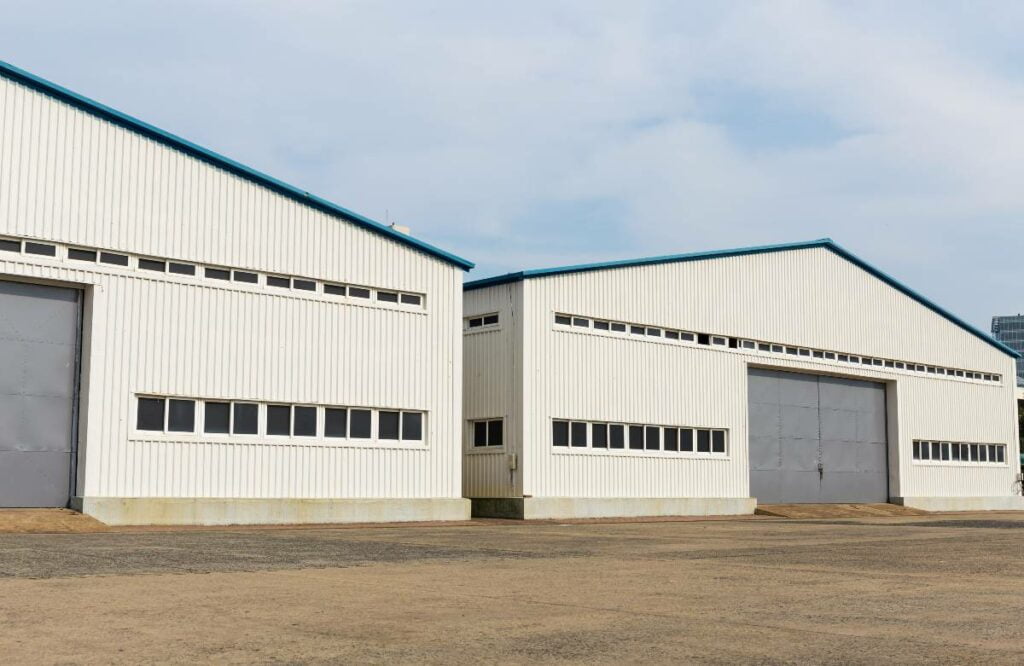
The Role of Technology and Automation in Industrial Real Estate
Technology and automation are transforming the industrial real estate sector, shaping the design and functionality of modern facilities. Automated storage and retrieval systems (AS/RS), robotic picking, and conveyor systems are becoming increasingly common in warehouses, enhancing efficiency and productivity.
Moreover, the rise of e-commerce has led to a growing demand for data centers and high-tech manufacturing facilities. These properties require specialized infrastructure, such as robust power and cooling systems, to support the unique needs of technology-driven tenants.
As an investor, it’s essential to stay informed about these technological advancements and consider their impact on property values and tenant preferences. Incorporating technology in property management and tenant services can also help differentiate your investments and attract forward-thinking tenants.
Financing and Structuring Industrial Real Estate Investments
Financing your industrial real estate investments is a critical aspect of the process. Traditional financing options include:
- Commercial mortgages: Long-term loans secured by the property, often with fixed or adjustable interest rates.
- Bridge loans: Short-term loans used to acquire or renovate properties before securing long-term financing.
Alternative investment vehicles, such as Real Estate Investment Trusts (REITs), private equity funds, and crowdfunding platforms, offer investors the opportunity to gain exposure to industrial real estate without directly owning and managing properties.
When structuring your investments, consider tax implications and potential benefits, such as 1031 exchanges, which allow investors to defer capital gains taxes by reinvesting proceeds from the sale of one property into another.
Environmental Considerations and Sustainable Practices in Industrial Real Estate
As the world becomes increasingly focused on sustainability, industrial real estate investors must adapt to the growing demand for environmentally friendly properties. Incorporating green building standards and energy-efficient features can attract eco-conscious tenants and potentially increase property values.
Brownfield redevelopment and adaptive reuse projects offer unique opportunities to transform underutilized or contaminated sites into productive industrial properties while contributing to environmental remediation efforts.
Sustainable features to consider include:
- Solar panels and renewable energy systems
- Energy-efficient lighting and HVAC systems
- Water conservation measures
- Electric vehicle charging stations
- Green roofs and landscaping
By embracing sustainable practices, industrial real estate investors can position their properties for long-term success and contribute to a greener future.
Maximizing Returns and Managing Industrial Properties
Effective property management and tenant relations are key to maximizing returns on your industrial real estate investments. Regularly communicate with tenants, address their concerns promptly, and foster a collaborative relationship to increase retention and minimize vacancies.
Implementing energy-efficient and sustainable practices can help reduce operating costs and attract environmentally conscious tenants. Additionally, explore strategies for optimizing rental income, such as:
- Regularly reviewing and adjusting rent rates based on market conditions
- Offering flexible lease terms and tenant improvement allowances
- Providing value-added services and amenities
By proactively managing your industrial properties and adapting to tenant needs, you can enhance the overall performance and profitability of your investments.
Top Reasons to Consider Industrial Real Estate Investing
In today’s dynamic market, industrial real estate has emerged as a compelling investment opportunity. The growth of e-commerce, shifting supply chain strategies, and the need for modern, efficient facilities have fueled the demand for industrial properties. Investors are attracted to the potential for stable cash flow, long-term leases, and asset appreciation. Moreover, industrial real estate often offers lower maintenance costs compared to other commercial property types, making it an appealing choice for savvy investors seeking to diversify their portfolios.
Understanding Industrial Real Estate Investments
To succeed in industrial real estate investing, it’s crucial to grasp the fundamentals of this unique asset class. Industrial properties encompass a wide range of facilities, including warehouses, distribution centers, manufacturing plants, and flex spaces. Each type of industrial real estate property serves a specific purpose and caters to the needs of different tenants. By understanding the characteristics and requirements of various industrial properties, investors can make informed decisions and identify the most suitable opportunities for their investment goals.
Types of Industrial Properties for Investment
Warehouses and Distribution Centers: These facilities are designed for the storage and distribution of goods, often featuring high ceilings, ample loading docks, and strategic locations near transportation hubs.
Manufacturing Facilities: These properties house production processes and may require specialized equipment, robust infrastructure, and adherence to zoning regulations.
Flex Spaces: These versatile properties combine elements of office and industrial space, accommodating a range of tenants, from research and development firms to light manufacturing companies.
Investors should carefully consider the specific needs of their target tenants and the local market dynamics when selecting the type of industrial property to invest in.
Factors to Consider When Investing in Industrial Real Estate
To make sound investment decisions, investors must evaluate several key factors:
Location: Properties located near major transportation networks, population centers, and key markets are often more desirable to tenants and can command higher rents.
Market Fundamentals: Analyzing local economic drivers, employment trends, vacancy rates, and rent growth projections can help investors gauge the health and potential of a specific market.
Property Condition: Assessing the age, condition, and functionality of an industrial property is essential to determine its ability to meet modern tenant requirements and estimate potential capital expenditures.
Tenant Quality: Evaluating the creditworthiness and stability of existing or prospective tenants can help mitigate risk and ensure reliable cash flow.
By thoroughly examining these factors, investors can make well-informed decisions and maximize the potential returns of their industrial real estate investments.
Benefits of Industrial Real Estate Investment
Investing in industrial real estate offers numerous benefits, including:
Stable Cash Flow: Long-term leases with creditworthy tenants provide a predictable and stable income stream.
Asset Appreciation: As demand for industrial properties continues to grow, well-located and well-maintained assets have the potential for significant appreciation over time.
Diversification: Industrial real estate can serve as a valuable diversification tool, helping investors spread risk across different asset classes and market sectors.
Inflation Hedge: Rents for industrial properties often include provisions for regular increases, providing a natural hedge against inflation.
Tax Benefits: Investors can take advantage of various tax benefits, such as depreciation deductions and 1031 exchanges, to maximize their returns.
By capitalizing on these benefits, investors can build a robust and resilient portfolio that generates steady returns and weathers economic fluctuations.
Choosing the Right Industrial Property
Selecting the right industrial property is crucial for the success of your investment. With a wide range of options available, investors must carefully consider various factors to identify the most suitable property for their needs. Whether you’re looking for a warehouse, distribution center, manufacturing facility, or flex space, it’s essential to evaluate the property’s features, location, and potential for long-term value appreciation.
Key Features to Look for in Industrial Real Estate
When assessing an industrial property, pay close attention to the following key features:
Building Specifications: Consider the property’s size, ceiling height, column spacing, and load-bearing capacity. These factors will determine the property’s suitability for different types of tenants and their operational requirements.
Loading and Accessibility: Evaluate the property’s loading docks, truck courts, and accessibility for large vehicles. Efficient loading and unloading capabilities are critical for many industrial tenants, particularly those in the distribution and logistics sectors.
Infrastructure and Utilities: Assess the property’s power supply, HVAC systems, fire suppression, and telecommunications infrastructure. Modern industrial tenants often require robust and reliable utilities to support their operations.
Zoning and Compliance: Ensure that the property complies with local zoning regulations and has the necessary permits for the intended use. Industrial properties may be subject to specific environmental and safety regulations, which should be thoroughly investigated.
By carefully evaluating these key features, investors can identify properties that are well-suited to the needs of their target tenants and have the potential for long-term value creation.
Importance of Location in Industrial Property Investment
Location is a critical factor in industrial real estate investment. A property’s location can significantly impact its attractiveness to tenants, rental rates, and overall value. When considering location, keep the following aspects in mind:
Proximity to Transportation Networks: Properties located near major highways, airports, seaports, and rail networks are highly desirable for industrial tenants. Easy access to transportation infrastructure enables efficient distribution and reduces logistics costs.
Access to Labor: Industrial tenants often require a skilled and reliable workforce. Properties located in areas with a strong labor pool and accessibility to public transportation can be more attractive to tenants.
Proximity to Customers and Suppliers: Industrial properties situated near key customers and suppliers can provide a competitive advantage for tenants, reducing transportation costs and improving supply chain efficiency.
Market Dynamics: Consider the local market’s economic drivers, growth prospects, and demand for industrial space. Properties located in markets with strong economic fundamentals and growing industries are more likely to experience steady demand and rental growth
Leasing and Tenant Considerations
Successful industrial real estate investing relies heavily on securing and retaining quality tenants. Long-term, stable tenants provide a predictable income stream and contribute to the overall value of the property. To achieve this, investors must understand the intricacies of lease agreements, tenant requirements, and effective strategies for attracting and retaining tenants.
How to Secure Long-Term Tenants for Industrial Properties
Securing long-term tenants is essential for the stability and success of an industrial real estate investment. Consider the following strategies:
Understand Tenant Needs: Engage with potential tenants to understand their specific requirements, such as space layout, loading capabilities, and infrastructure needs. Tailor your property to meet these requirements and make it an attractive option for long-term occupancy.
Offer Competitive Lease Terms: Develop lease terms that are competitive within the local market, including rental rates, lease duration, and tenant improvement allowances. Flexible lease options, such as expansion rights or renewal options, can also be attractive to tenants.
Prioritize Tenant Retention: Foster strong relationships with existing tenants through proactive communication, responsive property management, and a commitment to meeting their evolving needs. Regularly engage with tenants to address any concerns and explore opportunities for lease renewals or expansions.
By understanding tenant needs, offering competitive lease terms, and prioritizing tenant retention, investors can secure long-term tenants and maintain a stable income stream for their industrial properties.
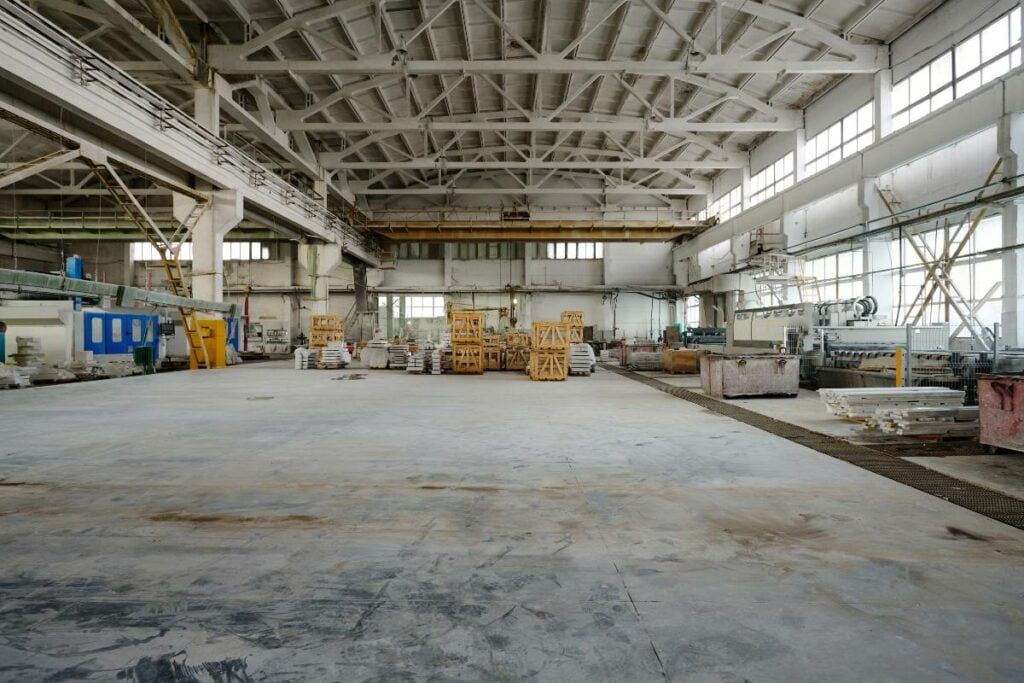
Understanding Lease Agreements for Industrial Real Estate
Lease agreements form the foundation of the landlord-tenant relationship in industrial real estate. To effectively negotiate and manage lease agreements, investors should familiarize themselves with the following key components:
Lease Term: Industrial leases typically range from 3 to 10 years, with longer terms providing greater stability for both landlords and tenants. Consider the lease term in relation to your investment goals and market conditions.
Rental Rates: Determine the appropriate rental rate based on factors such as property features, location, and market comparables. Include provisions for periodic rent increases to keep pace with inflation and market trends.
Operating Expenses: Clearly define the responsibilities for operating expenses, such as property taxes, insurance, utilities, and maintenance. Industrial leases often use a triple net (NNN) structure, where tenants are responsible for these expenses.
Tenant Improvements: Negotiate tenant improvement allowances or rent abatements to incentivize tenants and ensure the space meets their specific needs. Clearly outline the scope and responsibilities for any improvements in the lease agreement.
Termination and Default: Include provisions for lease termination and default, specifying the rights and obligations of both parties. Establish clear remedies and procedures for addressing any breaches of the lease agreement.
By thoroughly understanding and carefully negotiating lease agreements, investors can mitigate risks, protect their interests, and create a solid foundation for long-term tenant relationships.
Attracting Quality Tenants to Your Industrial Assets
Attracting quality tenants is crucial for the success and stability of industrial real estate investments. Implement the following strategies to make your property appealing to desirable tenants:
Highlight Property Features: Emphasize the unique features and benefits of your property, such as efficient layout, modern infrastructure, strategic location, and amenities. Use professional marketing materials, including high-quality photos and detailed property descriptions, to showcase your asset’s strengths.
Leverage Broker Relationships: Develop strong relationships with industrial real estate brokers who specialize in your target market. Brokers can provide valuable insights into tenant requirements, market trends, and potential leads for your property.
Implement Effective Marketing Strategies: Utilize targeted marketing channels to reach potential tenants, such as industry-specific publications, online listing platforms, and direct outreach to companies in your target sectors. Attend industry events and network with key decision-makers to build relationships and generate interest in your property.
Offer Move-In Ready Solutions: Provide move-in ready solutions for tenants by investing in pre-built improvements, such as office build-outs, warehouse partitioning, or specialized equipment. This can attract tenants who are looking for turnkey solutions and can help differentiate your property from competitors.
Case Studies: Successful Industrial Real Estate Investments
To illustrate the potential of industrial real estate investing, let’s examine two real-world case studies:
Case Study 1: Warehouse Acquisition and Renovation
In 2019, a group of investors acquired a 150,000-square-foot warehouse in a prime distribution hub for $8 million. The property had a solid tenant in place but required significant renovations to modernize the facility and attract higher-quality tenants.
The investors implemented a value-add strategy, investing $2 million in upgrades, including:
- New lighting and HVAC systems
- Improved loading docks and truck courts
- Enhanced fire and safety features
- Cosmetic improvements to the office and common areas
Upon completion of the renovations, the investors successfully negotiated a lease renewal with the existing tenant at a 20% higher rental rate and attracted a new tenant for the remaining vacant space. The property’s net operating income increased by 35%, and the investors exited the investment in 2023, selling the property for $14 million and achieving an IRR of 18%.
Case Study 2: Brownfield Redevelopment
An investor identified a 25-acre brownfield site in an up-and-coming industrial market. The site had a history of environmental contamination, which deterred many potential buyers. However, the investor recognized the potential for redevelopment and acquired the site for $3 million.
Working closely with environmental consultants and local authorities, the investor successfully remediated the site and obtained the necessary approvals for redevelopment. The investor then partnered with a developer to construct a state-of-the-art, 300,000-square-foot industrial park, featuring flexible space suitable for a range of tenants.
The project attracted significant interest from tenants, and the industrial park was fully leased within 12 months of completion. The investor’s total investment, including acquisition, remediation, and development costs, amounted to $25 million. The property was appraised at $40 million upon stabilization, representing a substantial return on investment.
These case studies demonstrate the potential for significant returns in industrial real estate investing, whether through value-add strategies or tackling complex projects like brownfield redevelopment.
FAQs
What makes industrial real estate an attractive investment option compared to other commercial property types?
Industrial real estate offers several advantages, including long-term leases, stable cash flow, lower maintenance costs, and the potential for high returns and asset appreciation.
How can investors assess the potential risks and rewards of an industrial real estate investment?
Investors should carefully evaluate location and market fundamentals, analyze property-specific factors, and conduct thorough due diligence to assess potential risks and rewards.
What are some emerging trends and technologies shaping the future of the industrial real estate sector?
E-commerce, last-mile delivery, cold storage, automation, and sustainable practices are among the key trends and technologies shaping the future of industrial real estate.
How can industrial property owners incorporate sustainable practices and green industrial building features?
Industrial property owners can incorporate sustainable practices by implementing energy-efficient systems, utilizing renewable energy, adopting water conservation measures, and pursuing green building certifications.
What are the advantages and challenges of investing in brownfield redevelopment or adaptive reuse industrial projects?
Brownfield redevelopment and adaptive reuse projects offer the potential for significant returns but also present unique challenges, such as environmental remediation, zoning restrictions, and higher upfront costs.
Conclusion
Industrial real estate market offers a wealth of opportunities for astute investors in 2026 and beyond. By understanding the fundamentals, staying attuned to market dynamics, and incorporating technology and sustainable practices, investors can position themselves for success in this thriving sector.
As you embark on your industrial real estate investment journey, remember to conduct thorough due diligence, develop strong relationships with tenants and industry professionals, and remain adaptable to the ever-evolving landscape.
With the right strategies and a keen eye for opportunity, industrial real estate investing can provide a solid foundation for long-term wealth creation and portfolio diversification.
Are you ready to explore the exciting world of industrial real estate investing? As a seasoned professional with over 18 years of experience, I’m here to help you navigate this dynamic market and unlock the potential of your investments. Schedule a consultation with me today, and let’s work together to build a strong, diversified portfolio that will stand the test of time. Don’t miss out on the incredible opportunities that industrial real estate has to offer in 2026 and beyond!
